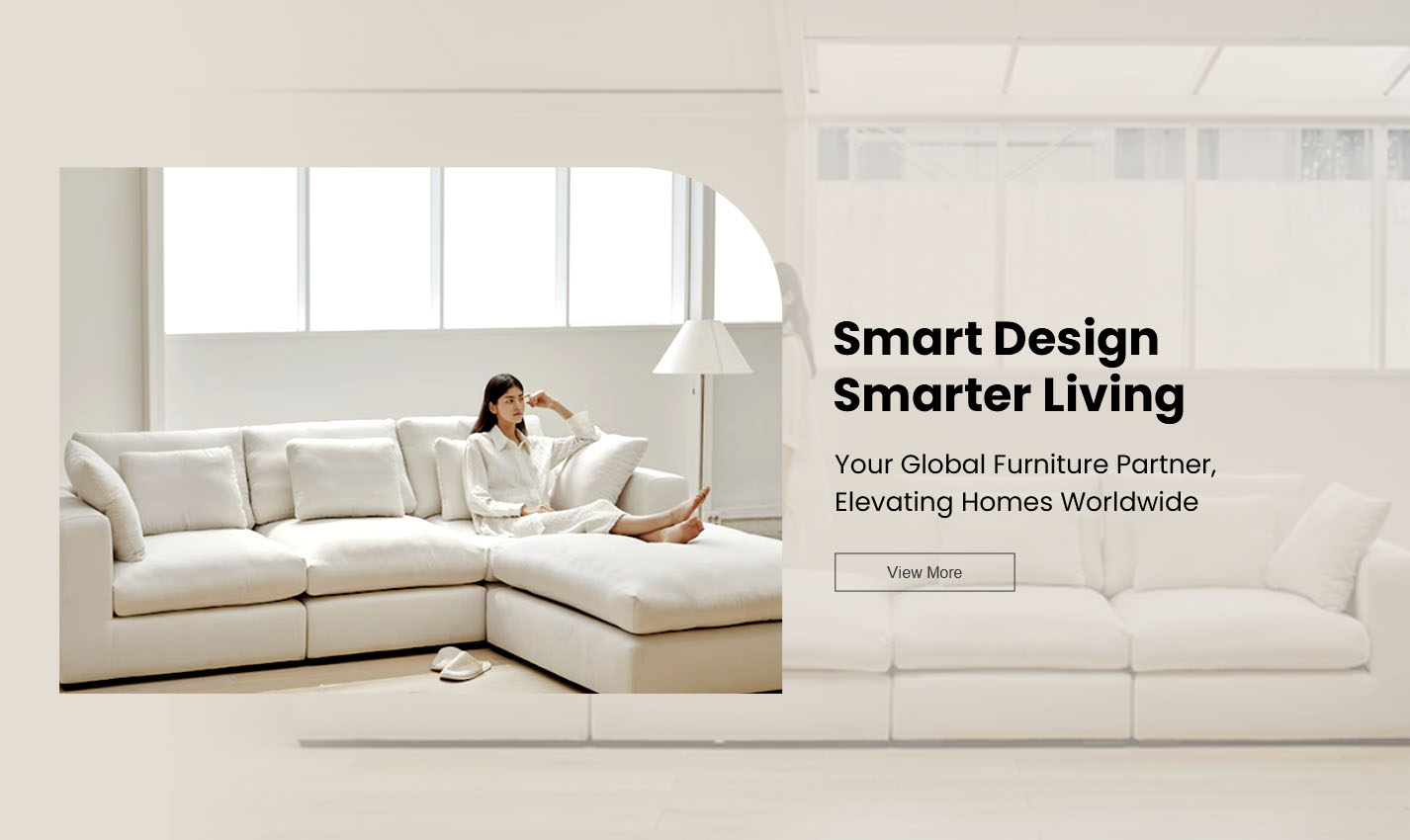Are Recliner Sofas Good for Your Back?
When it comes to home seating, comfort often dominates buying decisions. Yet for many people, spinal health and long-term posture support are equally important. The question “Are recliner Sofas good for your back?” is more than just about luxury—it’s about how modern furniture design interacts with the human body. In this article, we explore the relationship between Recliner Sofas and spinal comfort, including ergonomics, design principles, support mechanisms, and overall health benefits. As a trusted manufacturer, HANHAN offers premium recliner sofas designed to provide exceptional comfort while promoting healthy sitting posture.
1. Understanding Recliner sofa Functionality
A recliner sofa is not just a chair that leans backward. It is a mechanically engineered seating system that adjusts to your preferred position by supporting your spine, neck, and legs simultaneously. Whether operated manually or through an electric motor, recliners allow the user to distribute body weight evenly, which helps reduce stress on the vertebral column.
The core advantage of a recliner lies in its adjustable angles. When reclined at 110–130 degrees, the backrest supports the lumbar region while the leg rest elevates the knees slightly above hip level—an alignment that minimizes lower back strain. This neutral posture improves blood circulation, reduces muscle tension, and provides a sense of weightlessness.
HANHAN recliner sofas are designed with a precise balance between flexibility and firmness, ensuring that every adjustment supports the body’s natural curvature. This makes them not only comfortable for lounging but also beneficial for those with back discomfort or long working hours.
2. Ergonomic Design for Spinal Support
The key to back-friendly furniture lies in ergonomic engineering. A properly designed recliner sofa follows the body’s natural “S” curve, maintaining alignment from the cervical spine to the lumbar area. Poorly designed sofas, by contrast, encourage slouching and uneven pressure distribution, leading to chronic back pain.
A good recliner should meet the following ergonomic criteria:
| Feature | Function | Benefit |
|---|---|---|
| Lumbar Support Cushion | Fills lower back gap | Prevents spinal compression |
| Adjustable Back Angle | Aligns with spine curve | Reduces disc pressure |
| Headrest Alignment | Supports neck vertebrae | Relieves shoulder tension |
| Leg Elevation Mechanism | Promotes circulation | Reduces lower back strain |
At HANHAN, each recliner sofa undergoes ergonomic testing to ensure the proper angle, foam density, and back curvature. The structure supports the natural inward curve of the lower spine, while the padded headrest cradles the neck, maintaining optimal alignment. This thoughtful engineering transforms the act of sitting into a restorative experience for the back.
3. Pressure Distribution and Muscle Relaxation
The comfort of a recliner sofa also comes from balanced pressure distribution. Sitting upright for long periods concentrates weight on the lower back and tailbone. Reclining redistributes this weight across a larger surface area, easing pressure on the spinal discs and muscles.
When the backrest tilts and the footrest lifts, the recliner creates a semi-horizontal posture that enhances blood flow and oxygen delivery to the muscles. This position, often called the “zero-gravity angle,” mimics the body’s posture in space, relieving compression on the lumbar vertebrae.
HANHAN recliner sofas feature multi-layer cushioning that blends high-density foam with softer top layers, giving firm support where needed and gentle softness where comfort matters most. This combination not only reduces tension in the back and shoulders but also prevents stiffness from prolonged sitting, allowing users to rest, read, or even nap comfortably without strain.
4. Materials and Cushioning Technology
Comfort and back health depend heavily on the quality of materials inside the recliner. Cushioning that is too soft may cause the body to sink, misaligning the spine, while overly firm seats can create pressure points. The right balance delivers both resilience and adaptability.
Modern recliner sofas use advanced materials that enhance support and durability:
| Material | Description | Back Support Effect |
|---|---|---|
| High-resilience foam | Retains shape and firmness | Provides consistent spinal support |
| Pocket springs | Individual coil movement | Enhances ergonomic response |
| Memory foam | Adapts to body contour | Reduces localized pressure |
| Breathable upholstery | Enhances air flow | Keeps muscles relaxed |
HANHAN combines high-resilience foam with soft microfiber or leather upholstery to create recliners that feel plush yet stable. The cushions adjust subtly to the body’s contour, supporting each vertebra evenly. The breathable fabric layer maintains a cool surface, preventing heat accumulation that could increase muscle tension. Each detail—from the spring suspension to the lumbar padding—is fine-tuned for spinal wellness.
5. Therapeutic Benefits and Lifestyle Support
Beyond immediate comfort, recliner sofas can offer therapeutic benefits for people with back-related conditions or sedentary lifestyles. For those suffering from lower back pain, herniated discs, or sciatica, proper reclining angles can significantly reduce symptoms by promoting spinal decompression.
The reclining posture allows the spine to rest in its natural curve, improving nutrient flow to spinal discs and reducing nerve irritation. Additionally, users who experience swelling or poor leg circulation benefit from the raised footrest position, which minimizes fluid retention and pressure on the lumbar region.
HANHAN recliners are equipped with smooth motorized systems that allow precise positioning. Users can fine-tune their seating posture to relieve fatigue after work, improve posture recovery, or simply unwind after physical activity. These sofas are not only an investment in comfort but also a proactive measure for spinal health and overall wellbeing.
6. Long-Term Back Health and Maintenance
While recliner sofas can indeed be beneficial for your back, proper usage and maintenance are equally important. Over-reclining or using low-quality products may lead to posture imbalance over time. The best practice is to alternate sitting positions, ensuring that your muscles remain active and your spine supported.
To maintain comfort and back health, consider the following:
Adjust Gradually: Shift recline angles slowly to allow your back muscles to adapt.
Support Your Lower Back: Use built-in lumbar cushions or small pillows for added comfort.
Keep Feet Elevated: Maintain a slight elevation for circulation and spinal relief.
Inspect Cushion Firmness: Replace or rotate cushions if they lose shape to prevent sagging.
Maintain Clean Upholstery: Regular cleaning prevents allergens that may cause muscle tension or discomfort.
HANHAN recliner sofas are built for longevity, using reinforced metal mechanisms and durable upholstery. The structural integrity ensures consistent back support for years. Every recliner is tested to withstand thousands of motion cycles without losing balance or cushioning quality, ensuring lasting comfort and spinal protection.
Conclusion
So, are recliner sofas good for your back? The answer is yes—when designed and used correctly. Recliner sofas offer controlled posture alignment, even pressure distribution, and therapeutic support that can relieve back pain and enhance relaxation.
With HANHAN’s premium recliner sofa collection, users can enjoy furniture that combines ergonomic precision, superior materials, and luxurious comfort. Each recliner is not just a seat but a wellness tool—crafted to care for your spine while elevating the quality of your everyday life.
Previous: How To Assemble A Recliner Sofa




